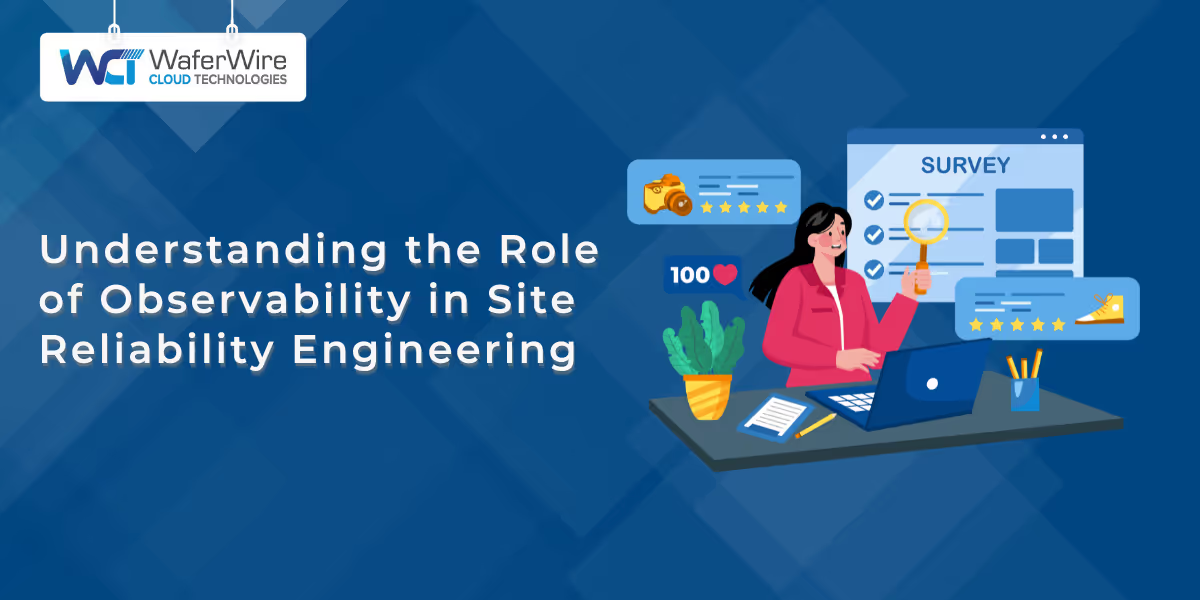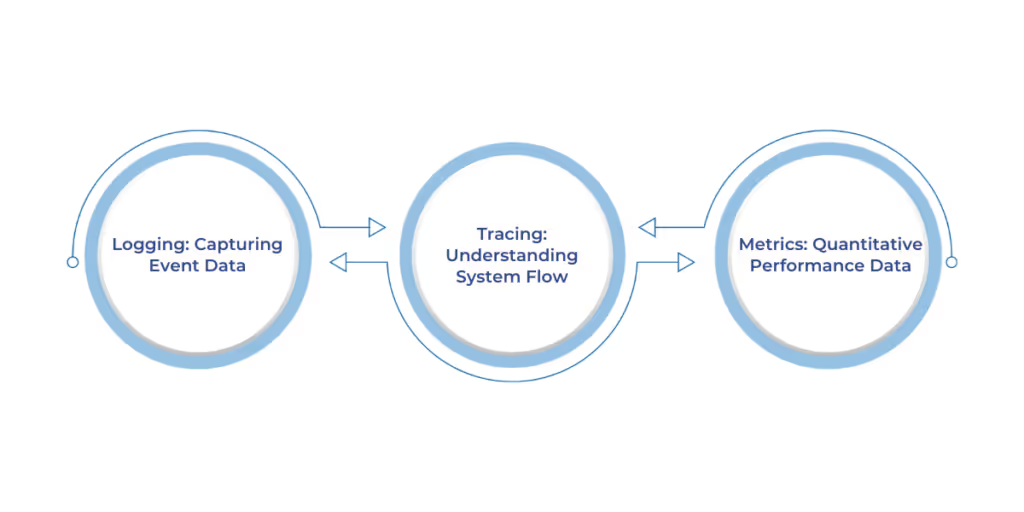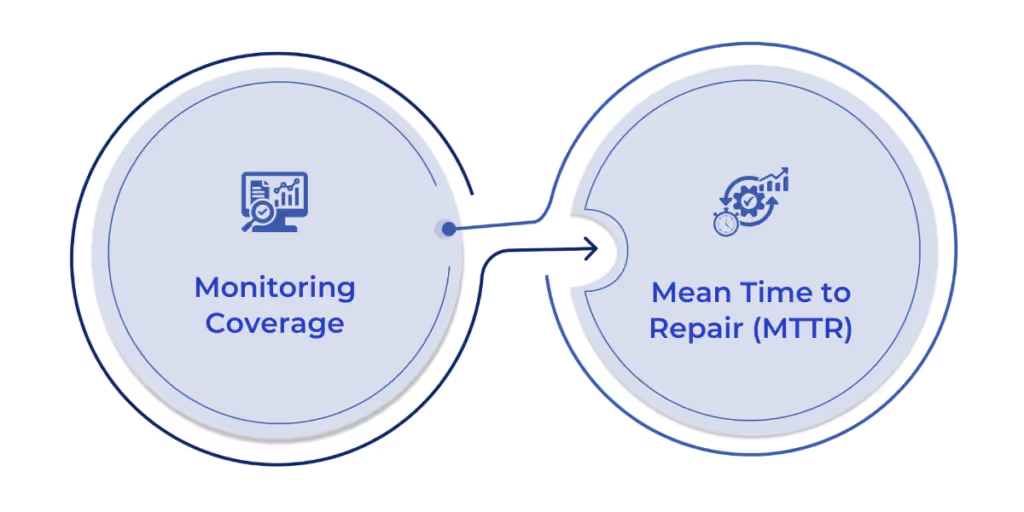

In complex software systems, ensuring reliability, performance, and availability has become more challenging. As companies rely on distributed architectures to deliver services, the need for robust monitoring, troubleshooting, and continuous improvement is critical. This is where observability comes into play, particularly within the context of Site Reliability Engineering (SRE).
The market for observability tools and platforms is projected to expand from $2.4 billion in 2023 to $4.1 billion by 2028, making it crucial to understand the concept better.
This article explores the integral role of observability in SRE, how it complements other practices, and why it’s indispensable for building scalable and resilient systems. Understanding how observability contributes to operational success is key to enhancing both user experience and engineering team efficiency.
With that in mind, it’s essential to understand what observability is and how it plays a pivotal role in improving operational efficiency.
Observability refers to the ability to infer the internal state of a system based on the data it generates, such as logs, metrics, and traces. In the context of SRE, observability goes beyond traditional monitoring. While monitoring provides visibility into a system’s performance, observability empowers teams to quickly diagnose issues, predict potential failures, and improve overall system reliability. It enables a deeper understanding of why something is happening and guides teams toward effective resolutions.
The primary goal of observability is to help detect, diagnose, and resolve faults before they significantly impact users. By continuously monitoring system health, detecting anomalies, and identifying performance bottlenecks, observability ensures that systems remain reliable, performant, and available.
Building on this foundation, we can now explore the specific ways in which observability enhances various aspects of SRE practices.
Observability empowers teams to monitor and react to issues, understand system behavior in depth, identify potential issues early, and maintain system reliability.
Observability plays a crucial role in understanding and maintaining application performance. By offering deep visibility into an application's inner workings, observability tools allow teams to track Key Performance Indicators (KPIs), such as:
With this visibility, teams can spot performance degradation early, identify potential bottlenecks, and address issues proactively. Observability ensures a comprehensive understanding of how changes in one part of the system affect others.
In SRE, ensuring system reliability is paramount. Observability helps teams track system health and detect emerging issues that could affect service quality. It allows teams to not only identify when problems occur but also understand the underlying causes, speeding up root cause analysis and resolution. This leads to improved quality assurance and helps meet Service Level Objectives (SLOs), ensuring systems remain resilient as they evolve.
The core objective of SRE is to maintain high system reliability. Observability supports this by providing real-time data on system performance. Early detection of issues—such as resource exhaustion, service interruptions, or latency spikes—allows teams to address problems before they impact users. Moreover, observability enables proactive maintenance decisions regarding scaling, infrastructure changes, and optimizations, all based on real-time performance data.
Having explored how observability facilitates early detection, let’s take a closer look at how observability differs from traditional monitoring.
Also Read: Building Resilient Systems with SRE and Chaos Testing
When discussing system reliability and performance, it's essential to differentiate between monitoring and observability. While they both play vital roles in maintaining system health, their approaches and capabilities vary significantly.
Here’s a table differentiating between Monitoring and Observability:
AspectMonitoringObservabilityDefinitionTracking system health by collecting data to generate reports, alerts, and dashboards.Providing real-time insights and in-depth analysis of system behavior to understand root causes.FocusPredefined metrics like uptime, response times, and error rates.Logs, metrics, and traces from all system levels for deep insights into issues.GoalDetecting known issues by tracking system performance against set thresholds.Diagnosing unknown issues by exploring and analyzing system behavior.ApproachReactive—alerts triggered when predefined thresholds are exceeded.Proactive—enables deep investigation and understanding of issues as they arise.Insight DepthHigh-level visibility—alerts notify when a problem occurs but lack details on why.Deep insights—enables root cause analysis to understand the "why" behind issues.Use CaseIdentifying when something is wrong (e.g., system downtime, high latency).Identifying why something went wrong, diagnosing and resolving complex issues.Data TypesFocuses on metrics such as uptime, error rates, and response times.Uses logs, metrics, and traces to provide a full picture of system performance.Real-time AnalysisLimited to predefined alerts; no exploration of the underlying data.Real-time exploration of system behavior and performance for immediate diagnosis.OutcomeAlerts to notify the team of issues that need attention.Understanding of system behavior, leading to informed decisions for remediation.
Next, let’s explore the various methods and tools that SRE teams use to achieve observability in their systems.

Achieving effective observability in complex systems requires leveraging several methods that provide detailed insights into system behavior. These methods help SRE teams detect, diagnose, and resolve issues before they affect users, ensuring system reliability and performance. Below are the core methods used to achieve observability:
Logging involves capturing and storing detailed event data—such as errors, transactions, or state changes—that helps engineers trace system behavior. Logs provide a historical record of activities and are invaluable for troubleshooting, helping teams identify the root causes of issues.
Tracing tracks requests as they move through various system components, helping teams understand interactions within distributed systems. Distributed tracing records the path of a request across services, enabling teams to pinpoint bottlenecks, latency issues, or performance degradation. It provides valuable insights into system flow and helps identify inefficiencies.
Metrics provide numerical data about system performance, such as response times, error rates, and resource utilization. By analyzing these metrics, SRE teams can track trends, set thresholds, and detect issues early. Metrics also help establish baseline performance and guide capacity planning.
Together, logs, traces, and metrics form the core of observability, offering a multi-dimensional view of system behavior and enabling teams to diagnose and resolve issues more effectively.
Now that we’ve covered the main observability methods, let’s take a look at the challenges that teams often face when implementing observability at scale.
Also Read: Understanding the Basics of Site Reliability Engineering (SRE)
While observability is essential for ensuring system reliability and performance, implementing it effectively at scale presents several challenges. These challenges can hinder the ability to fully leverage observability practices, but with the right strategies, they can be addressed. Here are the main challenges that teams face when implementing observability:
Despite these challenges, there are proven strategies that teams can employ to optimize their observability practices.
To overcome the challenges associated with observability and ensure effective system monitoring, teams can implement several best practices. Here are some of them:
Having explored these best practices, let’s now turn our attention to how teams can measure the effectiveness of their observability systems.
To ensure that observability practices are achieving their intended goals, it’s crucial to measure their effectiveness.

To evaluate the effectiveness of observability, track metrics like:
Regularly analyzing metrics such as performance trends, anomaly detection, and capacity planning ensures continuous improvement. This helps refine observability systems to identify issues earlier and optimize performance over time.
Effective observability enables real-time detection and root cause analysis, helping teams resolve issues promptly and prevent future outages. By analyzing trends and system weaknesses, teams can improve system reliability and minimize downtime.
In Site Reliability Engineering, observability is a cornerstone of ensuring that systems are reliable, performant, and available. By leveraging logs, metrics, and traces, and integrating monitoring with observability, SRE teams can gain deep insights into system behavior. This enables proactive issue detection, faster troubleshooting, and continuous improvement, ultimately leading to more resilient and efficient systems.
Ready to effectively implement observability in your Site Reliability Engineering practices and drive real-time insights? Consider leveraging advanced solutions like those offered by WaferWire.
Our comprehensive monitoring and observability tools can help you optimize system performance, detect issues early, and ensure seamless, resilient systems.
Visit WaferWire today to explore how our solutions can elevate your observability strategy and transform the reliability of your applications!

